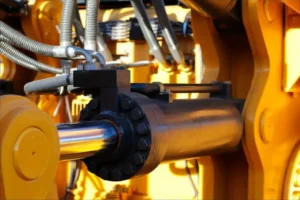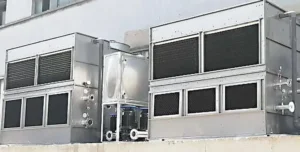
While alumina powder is not entirely incompatible with induction furnaces, its direct use presents significant challenges. In certain cases, with proper preparation and under controlled conditions, induction furnaces may handle alumina powder processing. However, there are several key issues when attempting to use it in standard conditions.
Poor Electrical Conductivity
Induction furnaces rely on electromagnetic induction. A conductive material placed within the furnace’s induction coil generates eddy currents when subjected to the alternating magnetic field. These eddy currents produce resistive heating (Joule heating). Alumina is an excellent electrical insulator, meaning it has extremely low conductivity. This makes it very difficult to induce sufficient eddy currents and thus achieve effective heating through this mechanism. The lack of conductivity severely limits or prevents the direct heating of alumina powder in a standard induction furnace.
High-Temperature Material Compatibility
Alumina’s high melting point (approximately 2050°C) poses a significant challenge for the refractory lining of typical induction furnaces. Standard refractory materials used in these furnaces may not be designed to withstand such extreme temperatures. Exceeding the refractory’s temperature limit can lead to melting, erosion, cracking, and ultimately, premature failure of the furnace lining. This increases maintenance costs and downtime. Furthermore, chemical reactions between alumina and the refractory material at elevated temperatures are possible, potentially compromising the integrity and performance of the lining.
Powder Handling and Agglomeration
Alumina powder tends to agglomerate, forming clumps or larger particles. This agglomeration leads to uneven distribution of the powder within the furnace, resulting in inconsistent heating and potentially affecting the quality of the final product. Poor flowability also creates difficulties in transporting, charging, and stirring the alumina powder within the furnace. Achieving uniform temperature distribution and efficient processing becomes significantly more complex.
Purity Considerations
While not directly related to the heating mechanism, the purity of the alumina powder is crucial. Impurities present in the alumina can melt or vaporize at the high temperatures encountered in the furnace. These impurities can then contaminate the furnace environment and the processed material, which is particularly problematic in applications requiring high purity. Therefore, using high-purity alumina is essential, adding to the cost and complexity of the process.
In summary, the combination of alumina’s poor electrical conductivity, the high temperatures required for processing, potential refractory compatibility issues, and challenges related to powder handling make the direct use of alumina powder in standard induction furnaces impractical. Specialized equipment and techniques might be developed for specific applications, but they would deviate significantly from typical induction furnace operations.







